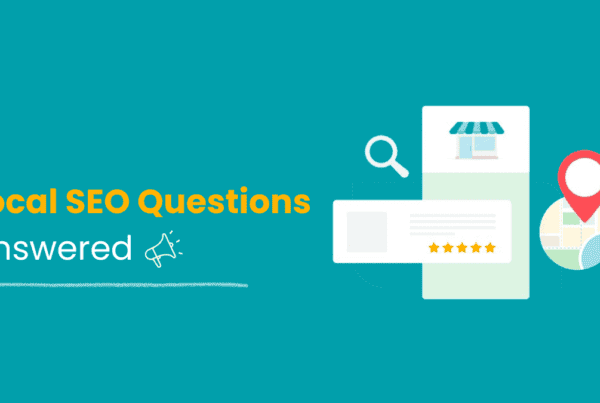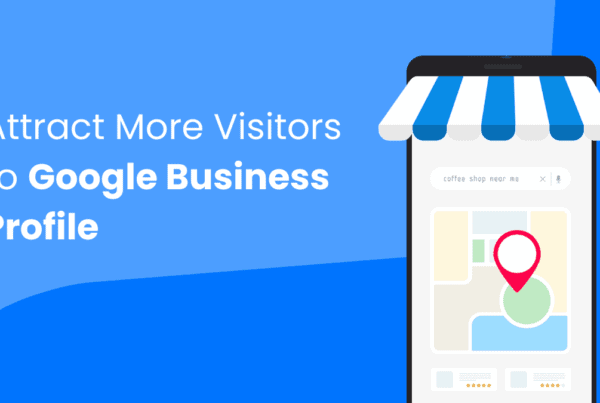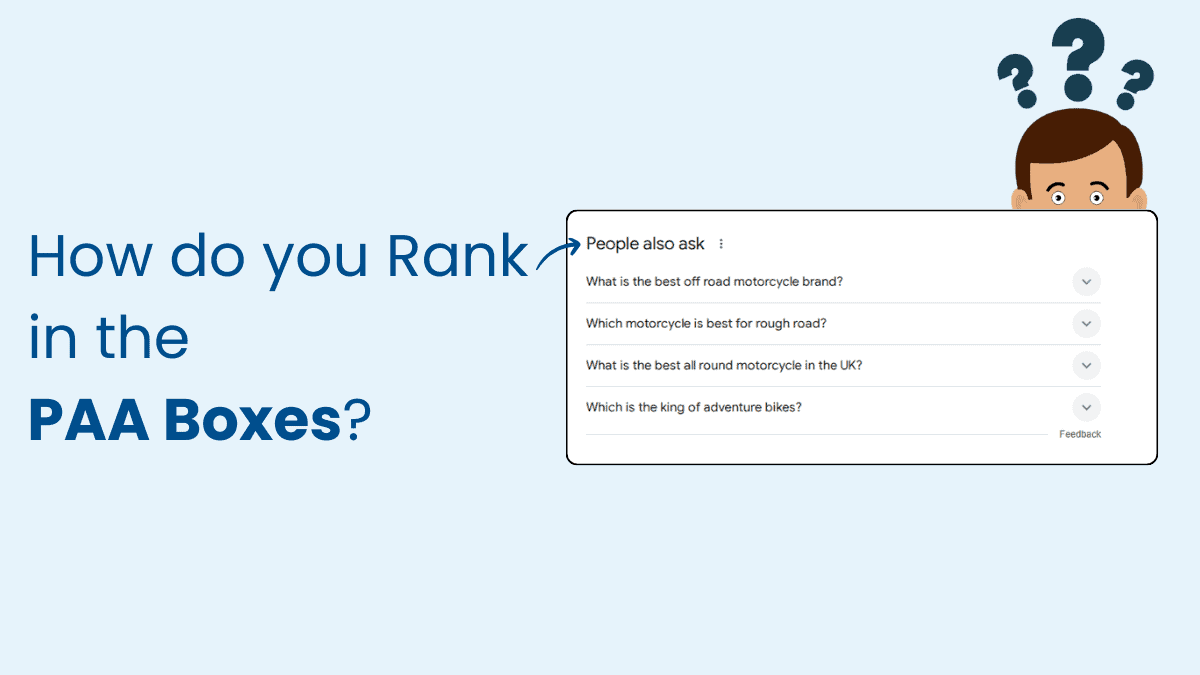
You must have noticed that little box on Google search engine result pages called “People Also Ask”. Backlinko says that People Also Ask (PAA) boxes appear in 40-60% of Google searches. It consists of questions related to your search, offering quick answers without needing to click any links. While it’s super helpful for users, it can feel a bit intimidating if you’re trying to rank higher on Google.
Could this box be stealing your spotlight?
The good news is that, instead of seeing it as competition, you can turn it into an opportunity. By featuring your content in those PAA boxes, you can grab more attention, connect with curious searchers, and boost your brand’s visibility.
In this post, we’ll break down exactly how to do that, step by step. Let’s get started!
What is the “People Also Ask” Box?
The “people also ask” (PAA) box is a feature on Google search engine result pages (SERPs) that helps users find answers to related questions they didn’t even know they had. 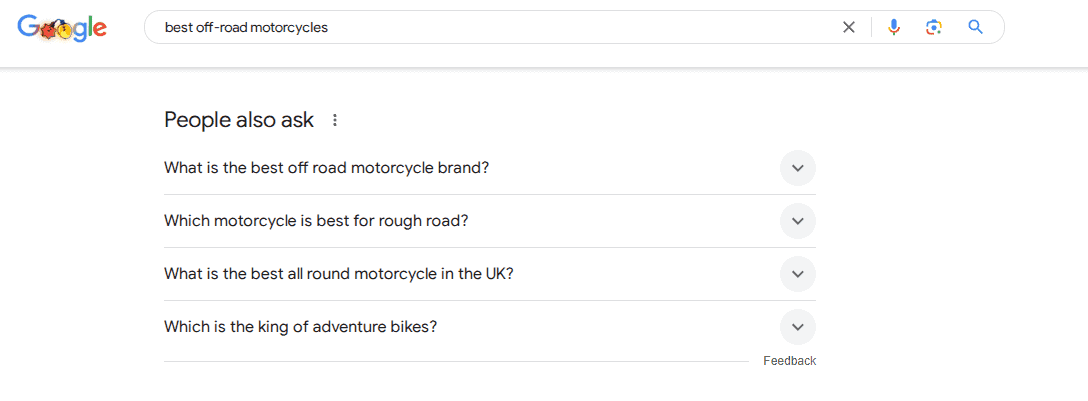 Imagine searching for “best off-road motorcycles” and right there on the results page, you see a box with questions like “What is the best off-road motorcycle brand?” or “Which motorcycle is best for rough road?” Clicking on any of these questions reveals a short answer, often with a link to the source where the full information is available.
Imagine searching for “best off-road motorcycles” and right there on the results page, you see a box with questions like “What is the best off-road motorcycle brand?” or “Which motorcycle is best for rough road?” Clicking on any of these questions reveals a short answer, often with a link to the source where the full information is available.
This feature isn’t just helpful for users; it’s also a big opportunity for websites. The PAA box pulls its answers from different web pages, and each question in the box acts like a doorway leading curious users to the content they’re looking for. The answers can be in various formats, like a short paragraph, a list, a table, or even a video. 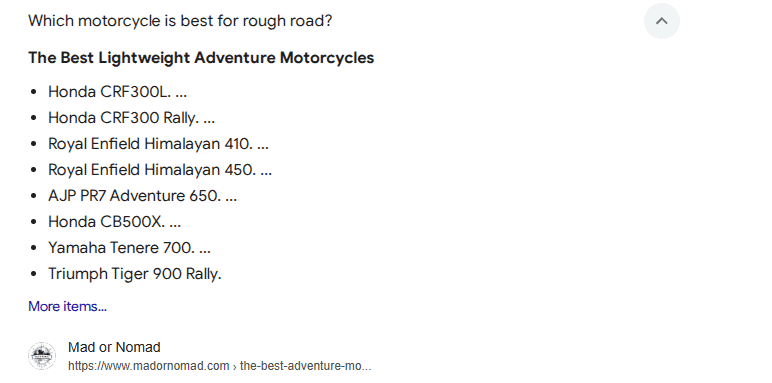 PAA boxes show up in nearly 70-80% of all Google searches, and depending on your industry, you might see them even more often.
PAA boxes show up in nearly 70-80% of all Google searches, and depending on your industry, you might see them even more often.
If you can answer some relevant questions people are asking, your content could land in PAA boxes, giving your website or brand a chance to shine.
Why is the PAA Box Important?
The “People Also Ask” (PAA) box is more than just a convenient feature for users, it’s a strong tool and opportunity for websites.
For users, it makes finding information easier, especially if they’re unsure how to phrase their search. 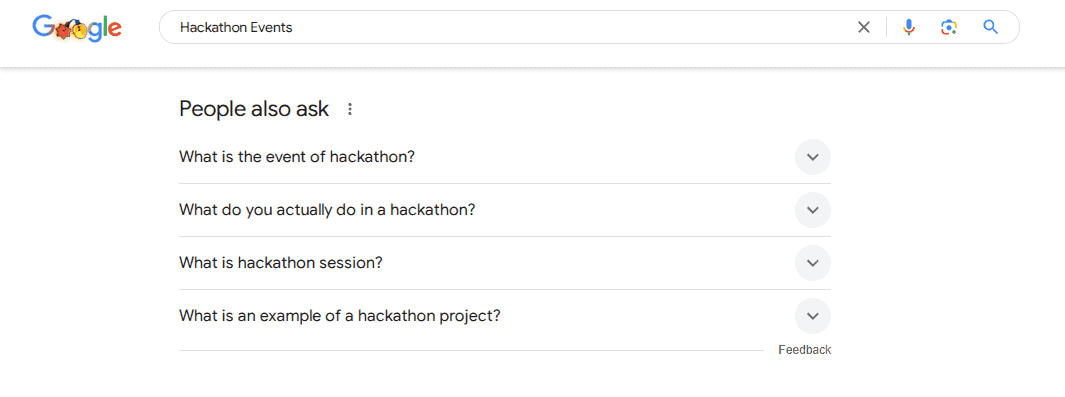 For example, if someone searches for “Hackathon Events” the PAA box might show related questions like “What is the event of hackathon?” or “What do you actually do in a hackathon?” These extra questions help users explore their topic in detail without needing to type anything extra.
For example, if someone searches for “Hackathon Events” the PAA box might show related questions like “What is the event of hackathon?” or “What do you actually do in a hackathon?” These extra questions help users explore their topic in detail without needing to type anything extra.
For website owners, appearing in the PAA box is a golden opportunity. It boosts visibility and can attract extra clicks directly from search results. It is an opportunity to showcase your content, even if you’re not ranking at the very top of the page.
The PAA box also reflects how search is changing. People are asking more conversational, question-based queries, often inspired by voice searches. This makes the PAA box a key part of modern SEO strategies. By optimizing your content for the kind of questions that appear in PAA boxes, you can position your site as a helpful and reliable resource.
Additionally, PAA boxes aren’t just about getting more traffic, they also give you valuable insights. The questions and answers in these boxes can inspire new blog post ideas, guide you to understand your audience’s needs better, and help you improve your overall content strategy.
Featured Snippets Section VS. People Also Ask (PAA) Box
Here’s a simple table comparing featured snippets and people also ask (PAA) sections:
| Feature | Featured snippets | People also ask (PAA) |
| Position | At the top of search results (Position 0). | Varies. |
| Content | Direct answer to the query. | Related questions with expandable answers. |
| Format | Text, lists, tables, or videos. | Mostly, short text snippets from web pages but lists, tables, or videos. |
| Goal | Quickly providing suitable content for the query. | Provide answers quickly, but also offer additional, related information. |
| Impact on SEO | Boosts visibility and clicks. | Drives traffic by covering related topics. |
Important Details to Know About “People Also Ask” Boxes
For anyone curious about how it works, here are some key facts to help you understand its importance:
1. PAA boxes can appear anywhere on the page
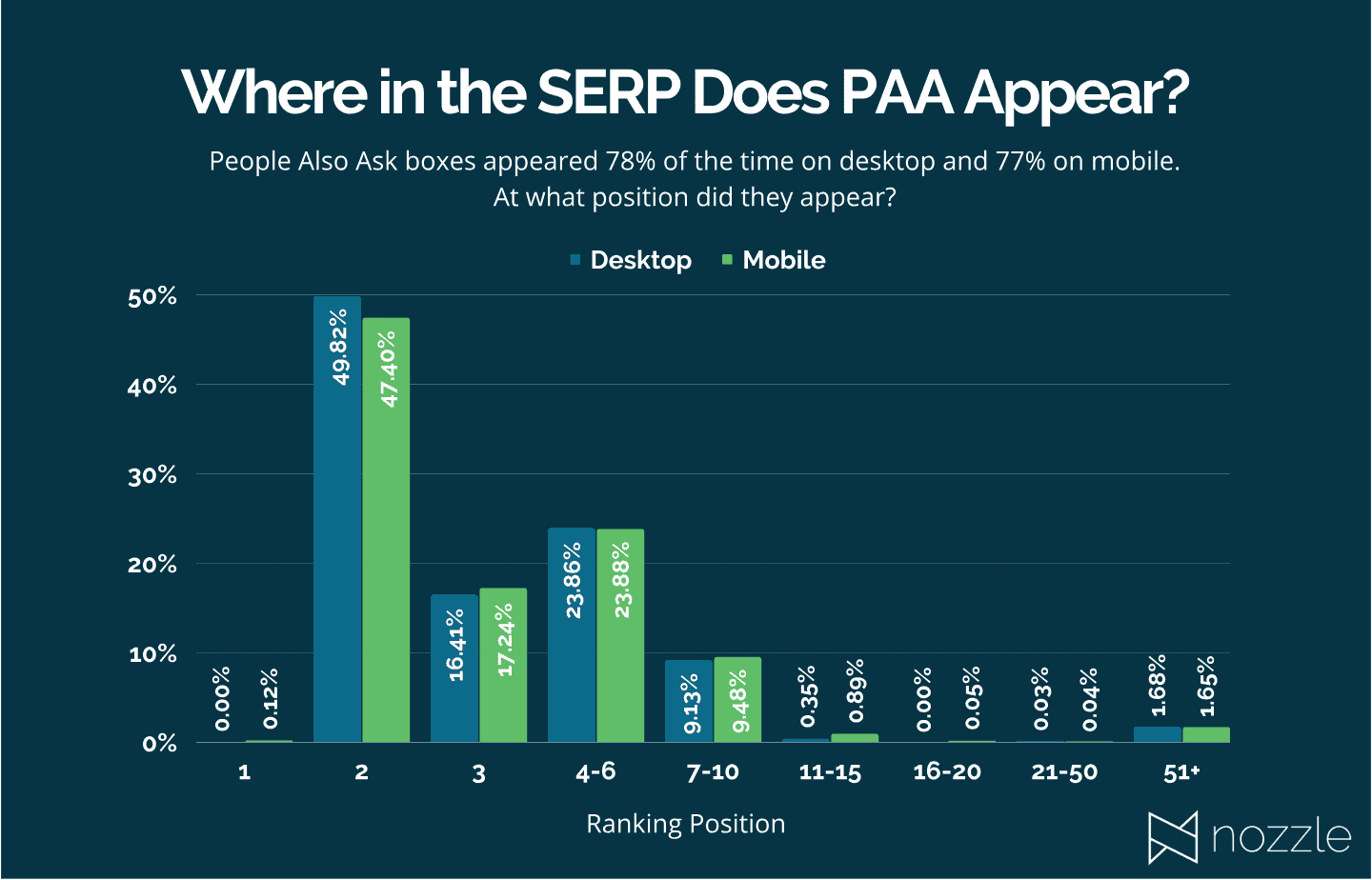 PAA boxes don’t have a fixed spot on the search results page. Sometimes, they show up near the top, right after the first result. Other times, they might appear further down or even on the second page. This flexibility makes them a unique feature to target in your SEO strategy.
PAA boxes don’t have a fixed spot on the search results page. Sometimes, they show up near the top, right after the first result. Other times, they might appear further down or even on the second page. This flexibility makes them a unique feature to target in your SEO strategy.
2. PAA questions keep expanding
One fascinating thing about PAA boxes is their “infinite” nature. More related questions are automatically added below when you click on a question to see its answer. This means users can explore a topic deeply without having to perform new searches.
3. Low interaction rates in PAA boxes
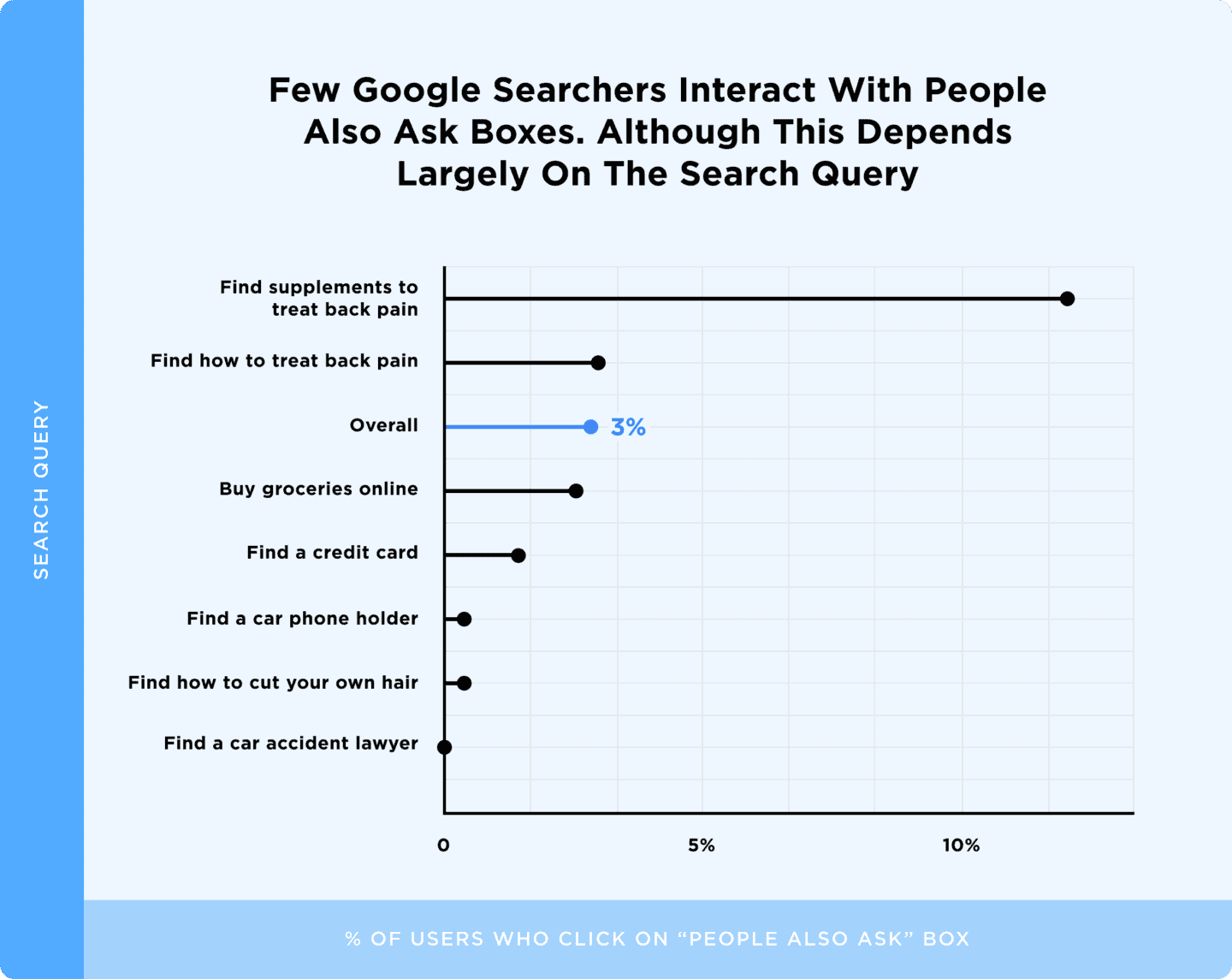 According to Backlinko, on average, only 3% of searchers interact with PAA boxes. However, interaction rates can vary, with some queries reaching as high as 13.6%.
According to Backlinko, on average, only 3% of searchers interact with PAA boxes. However, interaction rates can vary, with some queries reaching as high as 13.6%.
4. Google summarizes content for answers
When pulling answers from a webpage, Google may summarize the content to make it fit the PAA box. Providing clear, well-structured answers in your content can increase your chances of being featured.
5. High-quality pages are more likely to rank in PAA boxes
To appear in a PAA box, your content needs to be high quality. This includes having clear answers, using headings like H2s and H3s, and covering your topic in depth. For example, pages that use lists, include internal links and even embed videos often perform better.
6. Limited click potential
According to ahrefs, most interactions involve expanding answers rather than clicking the source. Additionally, PAA boxes typically display 3 or 4 answers, increasing competition for clicks among web pages.
7. Answers come in different formats
The answers in a PAA box can be displayed in various ways. You might see a short paragraph, a bulleted list, a table, or even a video. For example, if you search for “how to start a small business,” you could get a short step-by-step guide or a video explaining the basics.
8. Same source for multiple questions
If Google finds your content helpful, it may use it to answer more than one question. For instance, an article about “how to open a dental clinic” might be featured for questions like “How much does it cost to open a dental office?” and “Is a dental clinic a good investment?”
9. The frequency of PAA boxes can vary
Not every search result includes a PAA box, but they appear in nearly half of all searches. According to Nozzle.io, PAA boxes show up in 78% of desktop search results and 77% of mobile search results.
Understanding these details can help you create content that not only ranks in regular search results but also stands out in Google’s PAA boxes
How to Optimize for PAA Boxes?
Optimizing your content for the “People Also Ask” PAA boxes can be a fruitful move if you want your website to stand out in search results. Here are some simple and effective steps to improve your chances of appearing in these coveted spots:
1. Think about what your audience may ask
Start by thinking about the questions your audience is most likely to ask. These questions usually revolve around common topics or problems people are curious about.
For example, if your website is about sports shoes, questions like “What are the best shoes for running?” or “How to choose sports shoes?” could be great starting points.
Spend time researching Google’s PAA boxes to see what questions are already being asked. Tools like Answer the Public or AlsoAsked.com can help you find related questions that align with your audience’s needs.
2. Craft clear and direct answers
The PAA box prefers content that is easy to understand and gets straight to the point. When answering a question, aim for a clear and concise response. For example:
Question: What are the benefits of drinking water?
Answer: Drinking water helps keep your body hydrated, supports digestion, improves skin health, and boosts energy levels.
Avoid overly technical language or promotional phrases, your goal is to provide helpful and straightforward information.
3. Format your content for Google
Google loves well-structured content, so it’s essential to format your answers in ways that make it easy to read. Use these tips:
- Headings: Write your content with clear and simple headings. Use questions as your headings, like “Why is drinking water good for you?” This makes your content easy to read and understand.
- Lists: If your answer involves steps or examples, use numbered or bulleted lists.
- Tables: For comparisons or detailed data, consider using tables.
For example, instead of writing a long paragraph about the steps to start a blog, create a numbered list:
- Choose a blogging platform.
- Pick a niche.
- Set up your domain and hosting.
- Write your first post.
4. Use keywords strategically
Keywords are vital for search engine optimization (SEO). Find out which keywords are relevant to your topic and include them naturally in your content. For instance, if “how to start a business” is a popular keyword, use it in your headings, subheadings, and text.
You can also find inspiration from keywords already ranking on your site. If a specific page performs well, create new content around related questions that could appear in the PAA box.
5. Add FAQ schema markup
To make your content even more appealing to Google, consider adding FAQ schema markup. This is a bit of code that tells search engines your content includes questions and answers, making it more likely to appear in PAA boxes. If coding sounds complicated, tools like Susu digitals FAQ Schema Generator, Schema FAQ Generator by On top marketing agency can make it easier. That’s how a FAQ schema code looks like.
<script type="application/ld+json">
{
"@context": "https://schema.org",
"@type": "FAQPage",
"mainEntity": [{
"@type": "Question",
"name": "What is lorel ipsum?",
"acceptedAnswer": {
"@type": "Answer",
"text": "Lorem Ipsum is simply dummy text of the printing and typesetting industry."
}
},{
"@type": "Question",
"name": "Where does lorel ipsum come from?",
"acceptedAnswer": {
"@type": "Answer",
"text": "Contrary to popular belief, Lorem Ipsum is not simply random text. It has roots in a piece of classical Latin literature from 45 BC, making it over 2000 years old."
}
}]
}
</script>6. Keep improving your content
Google’s search trends constantly change, so it’s important to update your content regularly. Monitor what questions are showing up in PAA boxes and adjust your content accordingly. If you see competitors ranking for certain questions, study their content and make yours even better by adding more detail, examples, or clearer explanations.
7. Create helpful “how-to” guides
“How-to” guides are often featured in PAA boxes because they provide step-by-step solutions. For example, if your audience wants to learn How to make a coffee, a guide like this might work:
How to make a coffee:
- Measure your coffee
- Grind your coffee
- Prepare the water.
- Pour
- Soak and stir.
- Brew.
- Plunge.
- Pour.
- Wait
Keep the steps simple and easy to follow so users find them helpful.
8. Monitor and adjust
Finally, keep an eye on how your content performs. Use analytics tools to track whether your pages are appearing in PAA boxes and adjust your strategy based on what works. Over time, you’ll get better at creating content that ranks well.
By following these steps, you’ll increase your chances of appearing in PAA boxes and create content that genuinely helps your audience. Keep experimenting, stay curious, and watch your visibility grow!
Wrapping up
Ranking in PAA boxes can be a great way to increase your website’s visibility and attract more visitors. But, just like any other SEO strategy, it’s important to focus on what truly matters.
Prioritize questions that are relevant to your audience and tied to keywords that actually get searched often. Chasing low-impact queries might not be worth your time.
If you’re new to this, don’t worry, PAA boxes can be a quicker win compared to other SEO strategies, especially when done thoughtfully. By answering the right questions, you might even rank above the regular search results! That’s a big opportunity to outshine competitors and drive more traffic.
FAQs
What is PAA marketing?
PAA marketing is a strategy to target “People Also Ask” boxes on Google by creating content that answers popular user questions.
Why is my website not showing in PAA boxes?
Your website might not be optimized for the specific questions in the PAA box. Use structured content, focus on common queries, and ensure your site has strong SEO practices.
Why is the PAA box important?
PAA boxes help drive traffic by answering user queries directly. Being featured increases visibility and positions your site as an authority.

